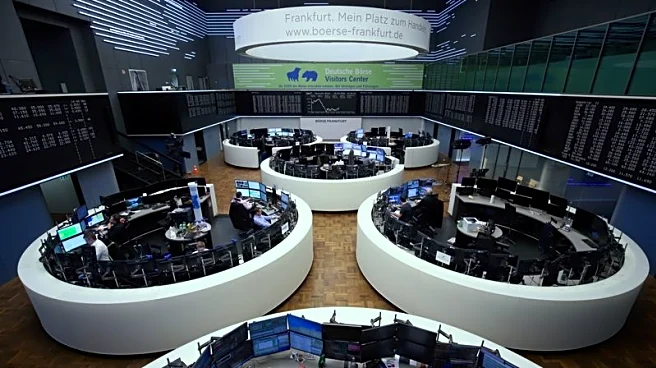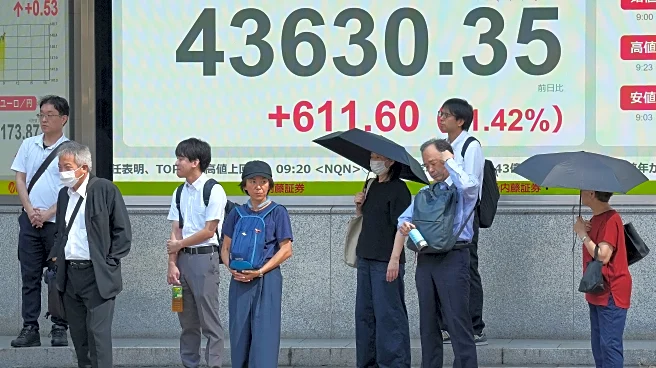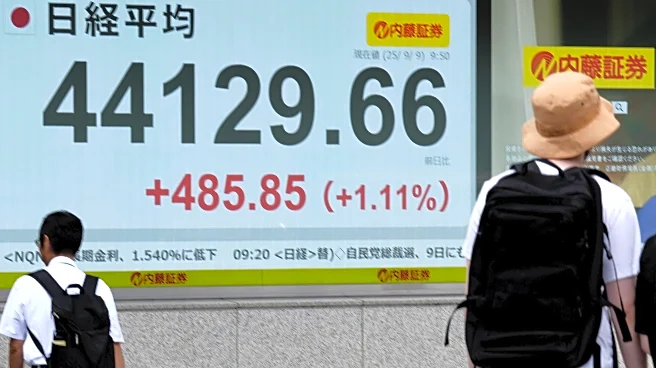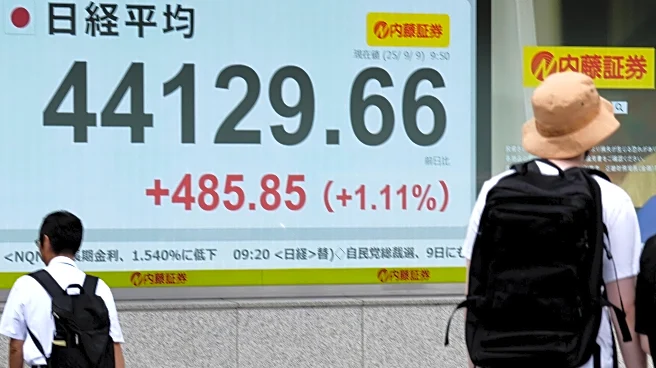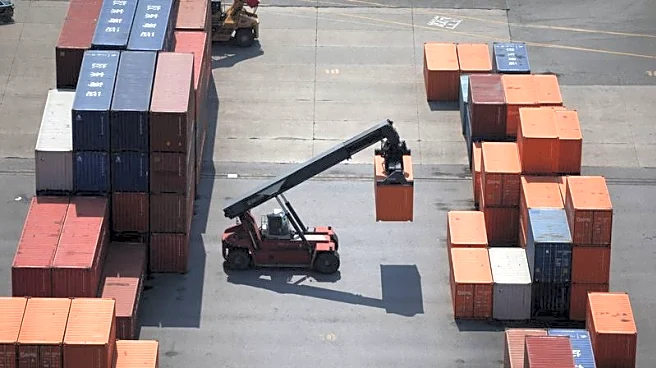What's Happening?
Foreign direct investment (FDI) net inflows globally have decreased to a six-month low in June, with a significant drop in the first half of the year. The decline is attributed to ongoing global trade risks and policy gaps, leading to a net outflow of equity capital. The Bangko Sentral ng Pilipinas reported a 17.8% decrease in FDI net inflows to $376 million in June compared to the previous year. This marks the lowest net inflow since December. The slowdown reflects a shift in nonresidents' net investments in equity capital, resulting in a net outflow of $57 million. Equity placements primarily came from Japan, the United States, and South Korea, with most investments directed towards the manufacturing sector. Reinvestment of earnings increased by 36.7% to $128 million, while net investments in debt instruments rose by 9.3% to $305 million. The decline in FDI is influenced by global uncertainties, trade tensions, and domestic challenges such as infrastructure gaps and policy unpredictability.
Why It's Important?
The decline in FDI net inflows is significant as it highlights the impact of global trade risks and domestic policy challenges on investment sentiment. The manufacturing sector, which received the majority of equity placements, is particularly affected by these developments. The decrease in FDI inflows could have broader implications for economic growth and development, as foreign investments are crucial for job creation and infrastructure development. The situation underscores the need for countries to address structural challenges and improve policy clarity to attract and retain foreign investments. The ongoing trade tensions and geopolitical uncertainties further complicate the investment landscape, potentially affecting investor confidence and cross-border capital flows.
What's Next?
The Bangko Sentral ng Pilipinas expects net FDI inflows to reach $7.5 billion this year, but achieving this target may be challenging given the current low inflow levels. A significant rebound in the second half of the year is necessary, supported by stronger project implementation and improved investor confidence. Accelerated infrastructure rollout and policy clarity are essential to boost investor confidence and attract foreign investments. The manufacturing and real estate sectors offer opportunities, but downside risks dominate the outlook. Addressing logistics issues, clarifying rules, and building investor confidence are crucial to reversing the trend and attracting more foreign investments.




